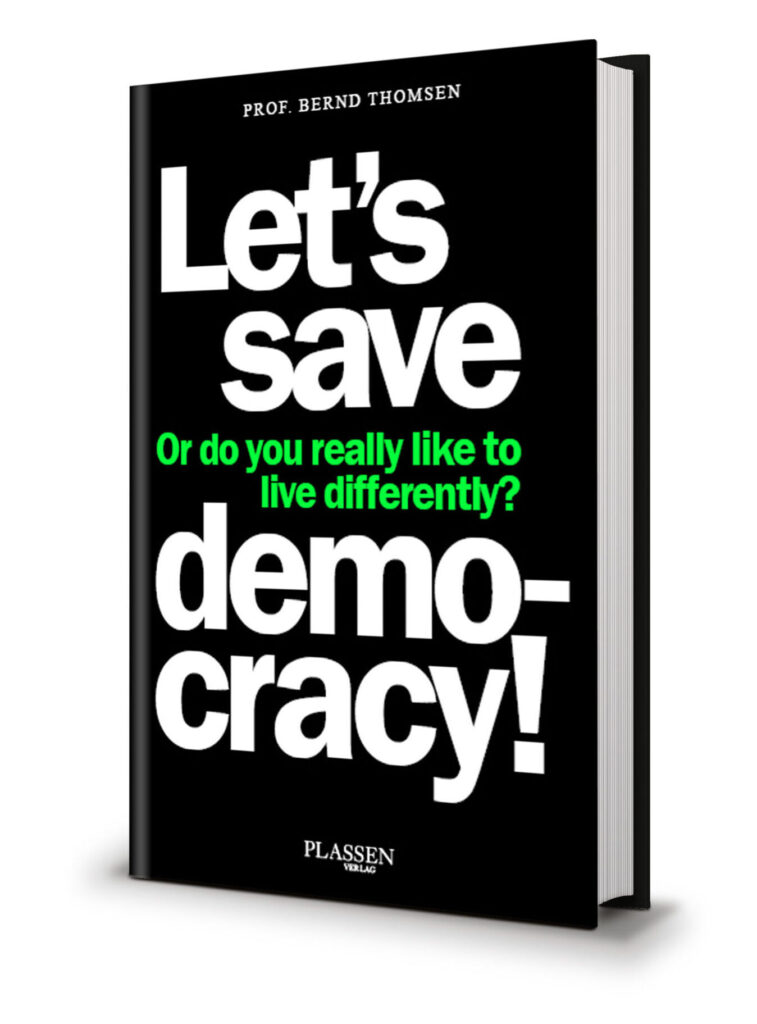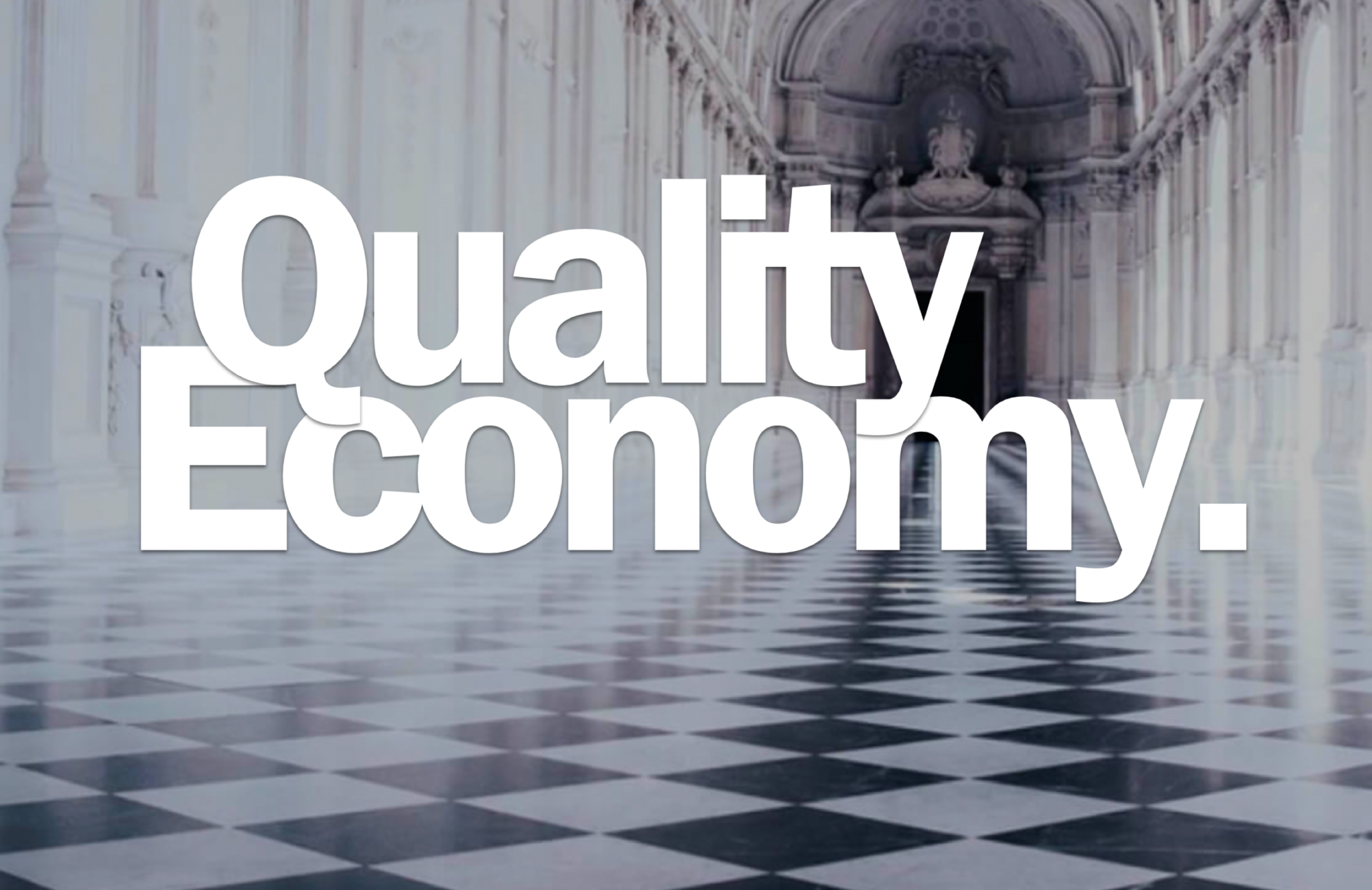More than in the book.
More than in the book.
More than in the book.


Courtesy of your smartphone.
Economy of the future.

Courtesy of your smartphone.
Economy of the future.
Courtesy of your smartphone.
Economy of the future.




Chapter 4
A behind-the-scenes look.
In November 2023, along with Florian von Schreitter and Simone Thomsen, I founded the Hall of Future – whose members you can view here. The Hall is dedicated to promoting a qualitative economy. Our book, Quality Economy, will be published by Springer in 2025.
In the epilogue, I plan to reflect on the insights gained from the contributions of our members. Here’s a preview of what I would write if the time had already come:
Quality Economy (QE) is a new growth economy that prioritizes sustainability and sets its goals according to a new framework. These goals are characterized by the tautogram “People, Planet, Prosperity”. Unlike quantitative economics, which relies heavily on mathematical models, statistics, and numerical data, qualitative economics takes a holistic view, incorporating broader approaches to examine and apply economic processes and behaviors.
This path to success is defined by qualitative methods and organizational processes, as well as the qualitative attitudes and motives of leaders. Quality Economy is regarded as a new, international economic direction that complements the 200-year-old quantitative orientation of macroeconomics, microeconomics, and business economics. It achieves quantitatively superior results, both in terms of overall economic development and company performance.
Historically, economics was considered apolitical, but today the opposite is true. It can remain impartial but is no longer apolitical.
In QE, “people” represents social justice, sociability, cultural diversity, corporate culture and an employee-centered focus. The consideration of these factors in QE influences economic decisions and structures by incorporating norms and values that are often overlooked in traditional quantitative models.
“Planet” signifies ecological sustainability, biodiversity and climate protection.
“Prosperity” in QE encompasses well-being, welfare, and overall prosperity.
Prosperity highlights the distinction from previous quantitative approaches.
Unlike the United Nations’ emphasis on socially-focused ecological, economic, and social sustainability measures – or the “people, planet, profit” concept used by economically-focused institutions like Harvard Business School and certifying Benefit Corporations – Quality Economy differentiates between qualitative and quantitative actions.
While the consideration of “profit” (alongside “people” and “planet”) in the aforementioned concept was an important step towards achieving a realistic view and gaining acceptance in business circles, the Quality Economy takes a more holistic approach to growth.
The qualitative methods and processes of the Quality Economy include, for example, adopting a circular economy instead of a linear one. But when you look at QE from a more detailed perspective, more differences arise. For example, it uses studies on future developments (scientific futurology) to create a well-founded reference and orientation framework that guarantees objectivity, formal accuracy and generalizability.
Preta research (qualitative and quantitative primary along with meta research) is another method employed in QE. It examines specific economic phenomena in detail, capturing the subjective perspectives and opinions of individuals or groups. This research helps understand the motivation and behavior of economic participants and provides insights into complex economic dynamics that purely quantitative methods cannot fully capture. By complementing quantitative analysis, these qualitative methods contribute to a more comprehensive understanding and application of economic processes.
The qualitative attitudes and motives of leaders in the Quality Economy contrast sharply with the quantitative employee management practices of the past, such as providing expensive corner offices and company cars. Instead, they focus on value- and meaning-oriented leadership. These leaders prioritize the principles encapsulated in the above tautogram, which, in practice, translates to implementation of an employee-centric corporate culture.

